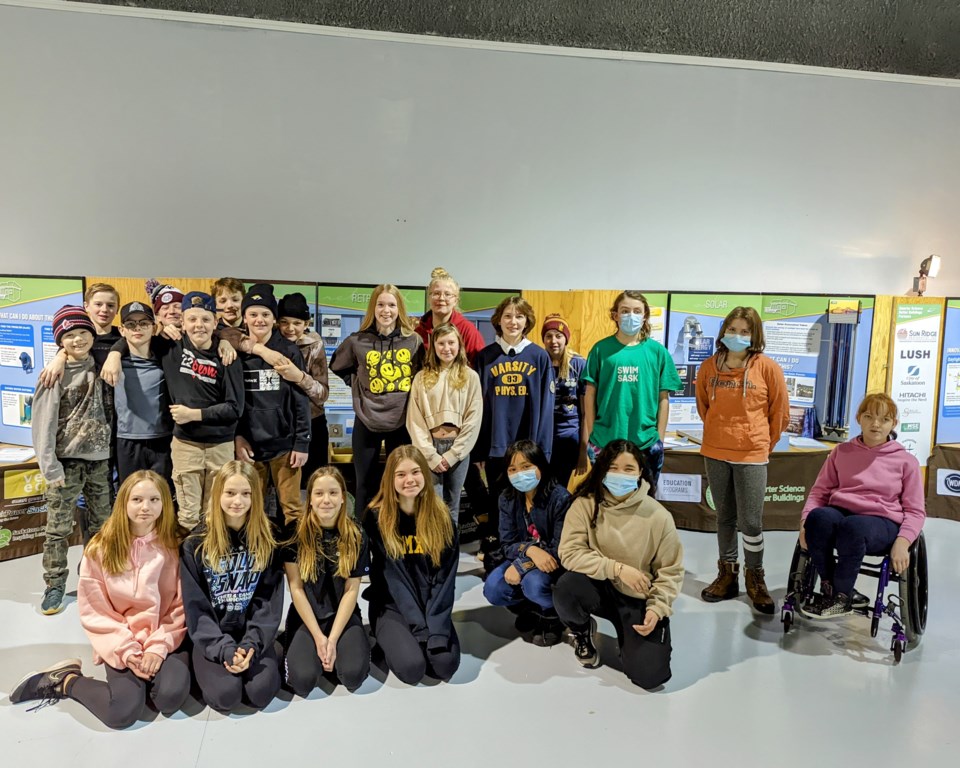The Western Development Museum echoed with the chatter of Grade 7 students, a sound Karla Rasmussen said the museum staff are very happy to hear again.
About 25 students from Ashlee Blais’ St. Michael School grade seven class filed into the Western Development Museum (WDM) on March 8th to learn about the science of making homes more energy-efficient.
The program is called Smarter Science Better Buildings and is an education partnership by the Saskatchewan Environment Society (SES) and WDM, designed to help students understand what goes into making homes more energy-efficient and environmentally sustainable. The SES is a non-profit registered charity that supports projects promoting sustainable living and sustainable resource use in Saskatchewan. The project is sponsored by SaskEnergy, which is subsidizing transportation for participating schools.
Rasmussen, the education public programs coordinator at the museum said the WDM and its staff are looking forward to bringing students back for educational opportunities after a two-year break in school trips.
The grade sevens were given clipboards with information to find from six displays featuring hands-on examples of technologies such as different types of insulation; water efficiency systems; solar panel and heat capture systems; and environmentally-friendly material sourcing.
The displays included information about a home designed by Saskatchewan company Vereco that boasts net-zero energy usage. One of the grade seven students was able to correctly identify the definition of a net-zero building: one that produces about as much energy as it consumes while being extremely efficient.
“Normally, we talk about things like history and culture in a museum,” Rasmussen told the class. She explained that the project’s historical tie-in comes from examples of different home materials used in different eras. The museum also informed students about the evolution of energy conservation and efficiency through history.
“As long as there have been people living in Saskatchewan, they’ve been concerned about having energy-efficient homes,” Rasmussen said, noting that Indigenous and first-settler peoples probably didn't use those specific words.
“Having a home that keeps the heat in during the wintertime and out during the summers… could have meant the difference between life and death” in extreme Saskatchewan weather, Rasmussen continued.
The project includes examples of building materials such as peat and straw, an early-1900s mail-order Eaton home that was apparently very poorly insulated, all the way up to Vereco’s modern net-zero recycled-newspaper and reclaimed hardwoods.
Students also learned about the improved R-values of adding insulation to existing homes, and how to check for and fix a leaking faucet – faucet leaks can waste up to 25 litres of water a day.
After spending about an hour absorbing the information from the project displays, students had the opportunity to spend some time wandering the WDM’s halls and looking at the exhibits.
As they went through the museum, the grade sevens also applied what they had learned, inspecting doors, walls, lights, and heating systems to understand their efficiency or lack of it.
In the museum’s 100 Years of Saskatchewan History exhibit, students learned about how people kept warm or cool before modern clothing and the advent of electricity.
Some of the project’s questions are more challenging. There is some math, such as how to calculate flow rates from various showerheads or contrast energy usage from LED and fluorescent bulbs.
Sustainability, energy efficiency, and renewable power are becoming increasingly important subjects. The Smarter Science Better Buildings project might form part of a vital learning objective for the future




